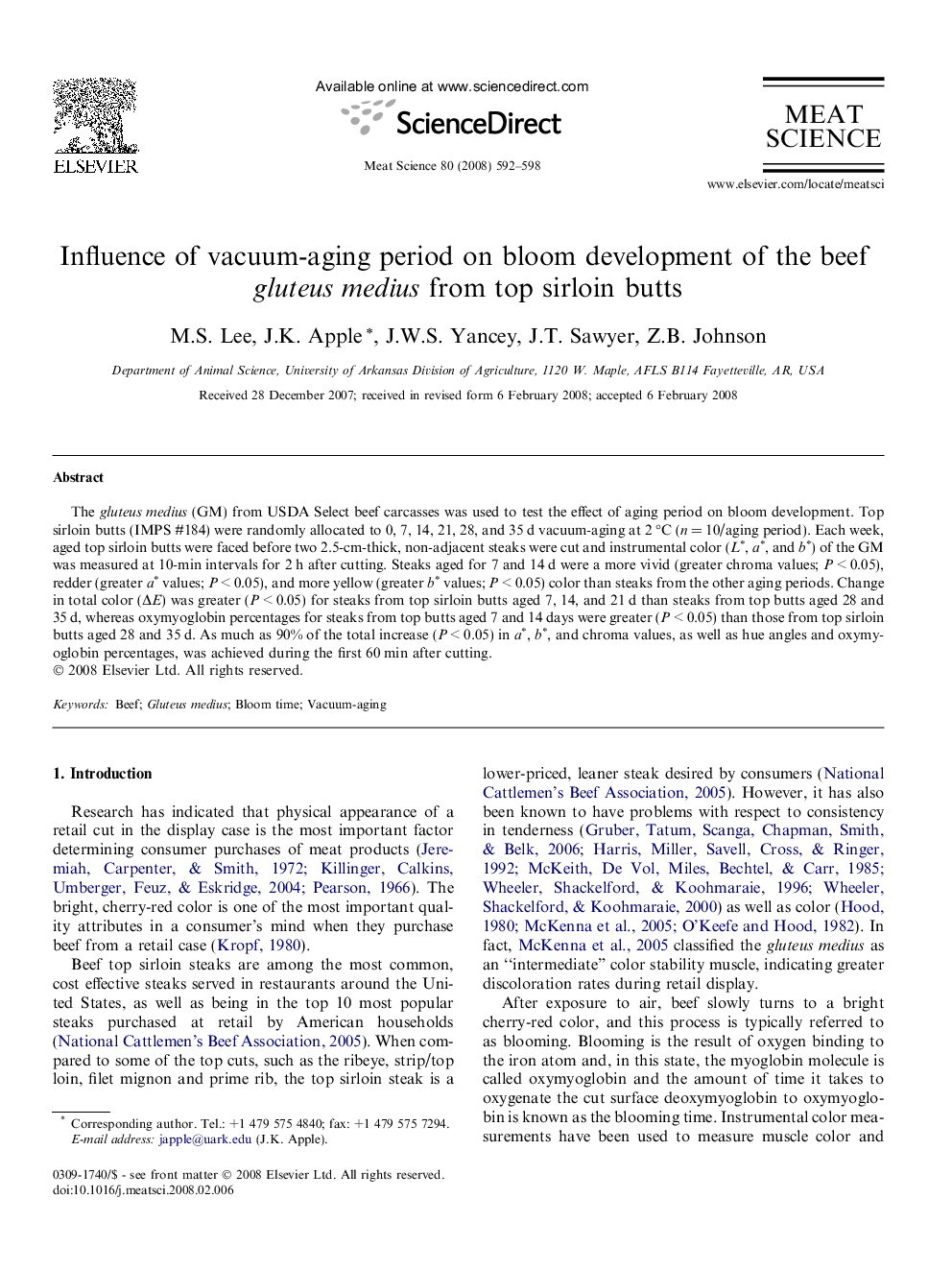| Article ID | Journal | Published Year | Pages | File Type |
|---|---|---|---|---|
| 2451355 | Meat Science | 2008 | 7 Pages |
The gluteus medius (GM) from USDA Select beef carcasses was used to test the effect of aging period on bloom development. Top sirloin butts (IMPS #184) were randomly allocated to 0, 7, 14, 21, 28, and 35 d vacuum-aging at 2 °C (n = 10/aging period). Each week, aged top sirloin butts were faced before two 2.5-cm-thick, non-adjacent steaks were cut and instrumental color (L∗, a∗, and b∗) of the GM was measured at 10-min intervals for 2 h after cutting. Steaks aged for 7 and 14 d were a more vivid (greater chroma values; P < 0.05), redder (greater a∗ values; P < 0.05), and more yellow (greater b∗ values; P < 0.05) color than steaks from the other aging periods. Change in total color (ΔE) was greater (P < 0.05) for steaks from top sirloin butts aged 7, 14, and 21 d than steaks from top butts aged 28 and 35 d, whereas oxymyoglobin percentages for steaks from top butts aged 7 and 14 days were greater (P < 0.05) than those from top sirloin butts aged 28 and 35 d. As much as 90% of the total increase (P < 0.05) in a∗, b∗, and chroma values, as well as hue angles and oxymyoglobin percentages, was achieved during the first 60 min after cutting.
